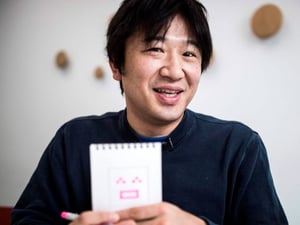A BRIEF HISTORY OF BEING BRIEF
People use their phones and social platforms nonstop. The preferred usage patterns that match these devices and their most common format and display calls for brief, concise, and global language. Hashtags and emoji are popular on social media and phones because they are simple, universal, and effective ways to communicate.
- There are 3.96 billion global social media users (51% of adults)
- 2.4 billion active users on Facebook, 500 million on Instagram, 330 million on Twitter
- There are 5.15 billion global mobile phone users (67% of adults)
- Character limits on social media platforms and screen sizes;
a. The trend from desktop to mobile and from fingers to thumbs; - Time factors/limited time to produce content (texting, reading on the go/remotely);
- Shorter attention spans and trying to capture attention in a crowded space.
Story of the Hashtag
 The strict 140-character limit for tweets set Twitter apart from its rivals. Even without a character limit, many longer posts are truncated. Twitter’s significance in the digital age was defined by the hashtag, a symbol that has helped political organizers and citizens mobilize, promote causes, build groups, promote businesses and follow news events.
The strict 140-character limit for tweets set Twitter apart from its rivals. Even without a character limit, many longer posts are truncated. Twitter’s significance in the digital age was defined by the hashtag, a symbol that has helped political organizers and citizens mobilize, promote causes, build groups, promote businesses and follow news events.
During 2007, Chris Messina proposed the hashtag for organizing tweets and so that SMS or IM clients could interact. The first hashtag ever was #barcamp, which was Messina’s tech conference.
A few months later, the #SanDiegoFire hashtag was sparked to aggregate tweets and updates about California wildfires. The Twitter team was initially not keen on hashtags. They didn’t like the way they looked and thought hashtags were “too nerdy.” Twitter didn’t fully embrace the hashtag until 2009, realizing that it was more than just a useful way to group content, but a unique vernacular for expressing ideas and emotions online. Hashtags invigorated the platform and brought many new users.
In 2014, “hashtag” made the Oxford Dictionary.
Have you used any of these popular hashtags - #BlackLivesMatter, #MAGA, #MeToo, #SundayFunday, #YOLO or #caturday?
The Hashtag Symbol
The symbol portion of the hashtag eventually made its way to dial-button telephones, the result of AT&T looking forward to phones interacting with computers. To complete a square keypad with 10 digits (including 0), they added the numerical sign (#) and an asterisk (*).
Story of the Emoji
 Emoji appeared on Japanese mobile phones in 1997, thanks to Japanese interface designer Shigetaka Kurita. Emojis were initially designed to add nuance to otherwise flat text. Kurita began by designing 176 emojis using a grid of 12x12 pixels.
Emoji appeared on Japanese mobile phones in 1997, thanks to Japanese interface designer Shigetaka Kurita. Emojis were initially designed to add nuance to otherwise flat text. Kurita began by designing 176 emojis using a grid of 12x12 pixels.
Realizing writing online without access to a thumbs up emoji was nearly impossible, Unicode adopted the emoji in 2010 (Unicode is an information technology standard for the world's writing systems). The move was the beginning of emojis being legitimized as a language. “Face with Tears” (the laugh-cry emoji) was actually adopted as a word by the Oxford Dictionary in 2015.
- Did you know that the emoji was predated by the emoticon - :) ;) )”( - a basic text-based version of the now established Unicode emoji language and likely took inspiration from pictograms?
- Fully 92% of all people online use emoji
- On Instagram, nearly half of the posts contain emoji
What's Next?
Whatever social channels that follow and whatever devices that have yet to enter the market, there will always be a shorthand. From police radio jargon to prehistoric petroglyphs, people will find the shortest and clearest way to connect simply.

